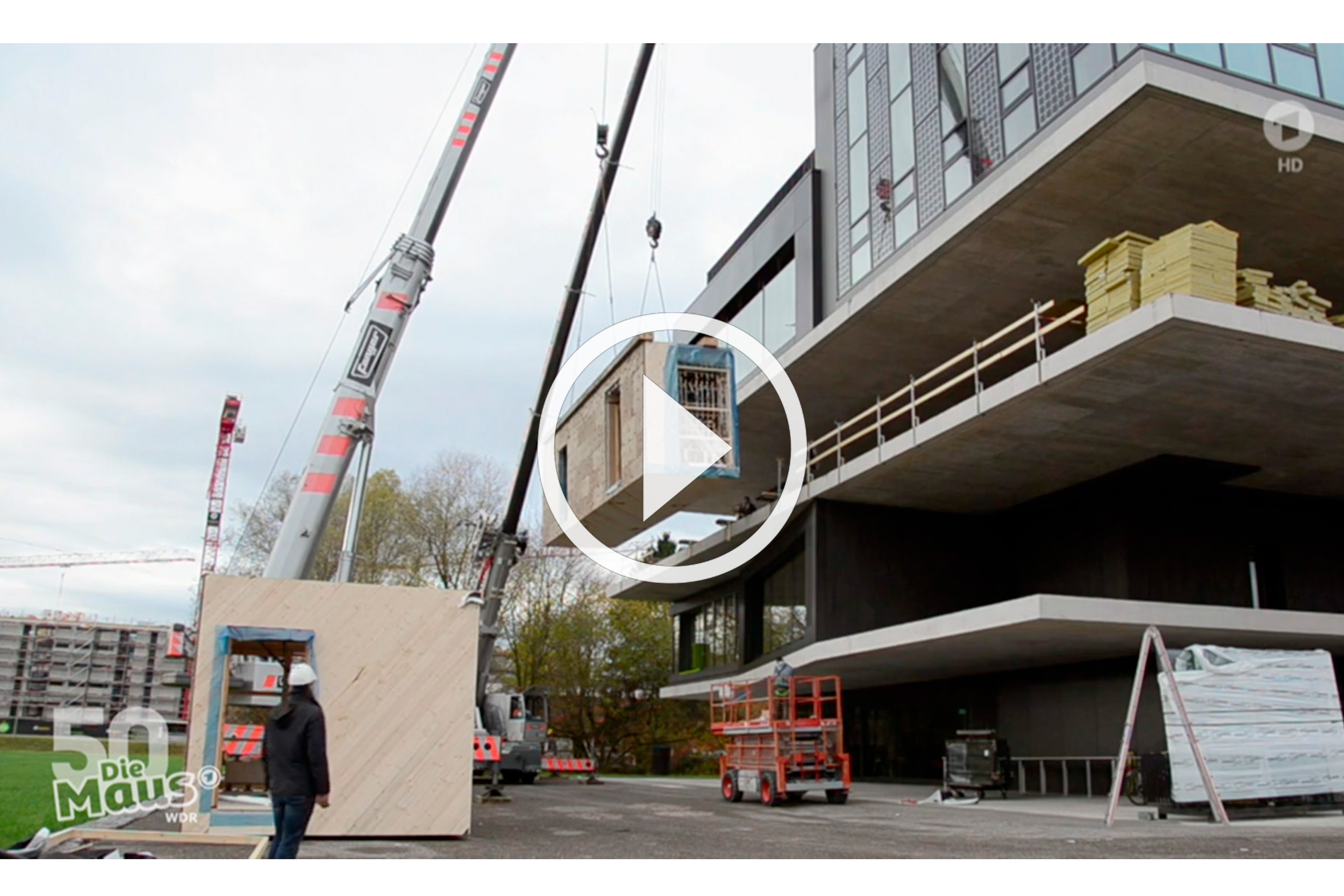UMAR – Urban Mining and Recycling
The UMAR housing and research unit of the Swiss research institute Empa at “NEST” is demonstrating what a paradigm shift in the construction industry might look like
Experimental, educational and even radical is the housing unit UMAR by Werner Sobek, Dirk E. Hebel and Felix Heisel, who not only want to test new materials as real as possible, but also want to permanently change our understanding of buildings and cities. UMAR invites you to discover a building as a material storage and cities as urban mines.
The world’s natural resources are limited, which is why we need to rethink how we use and reuse everything — away from linear material-consumption and towards an economy of recycling. The Urban Mining and Recycling (UMAR) housing and research unit of the Swiss research institute Empa at “NEST” is demonstrating what this paradigm shift in the construction industry might look like. The unit is based on the idea that all resources required to construct a building must be fully reusable, recyclable or compostable.
Architects Werner Sobek, director of the Institute for Lightweight Structures and Conceptual Design of the University of Stuttgart and owner of the Werner Sobek Group, Dirk E. Hebel and Felix Heisel of the Chair of Sustainable Construction at the Karlsruhe Institute of Technology (KIT) have come up with a building concept that uses entirely separable resources, either reusable or compostable: mortar-free, folding walls made of recycled demolition debris, bathroom cladding made of recycled plastic chopping-boards, or mushroom mycelium as compostable wall-insulation. UMAR is thus not only a material laboratory but also a material depot. It is also proof that responsible use of natural resources and modern architecture can go hand in hand. The general contractor of the project is Kaufmann Zimmerei und Tischlerei. The seven modules that form the new unit were prefabricated in their factory in the Reuthe, Austria.
Images © Felix Heisel
The structure as well as large parts of the facade are made of untreated wood. The innovation lies in the connections and the material-oriented use: all connections of the system subjected to tension and compression can be easily undone. Adhesive connections had been omitted in favor of plug and screw connections. The wood being used is applied in such a way that an otherwise standard coating is not necessary, thus making purely type-sorted recycling or purely biological composting possible.
The facade consists of aluminum and copper. Both metals can be melted and recycled according to type. Inside, various serially-processed building products had been used, the different materials of which can be recycled in a type-sorted manner and without residue. Among other things, grown wall panels consisting of mushroom-based mycelium, innovative recycling stones, recycled insulation materials, as well as borrowed floor coverings are also being used in the unit. Through the use of such new “material leasing concepts“, the construction of this unit also calls into question the existing economic concepts prevalent in the construction industry.
Also have a look at UMAR in the 50th anniversary episode of the children’s program “Die Sendung mit der Maus”:
More information about UMAR on www.nest-umar.net and on www.nb.ieb.kit.edu .




